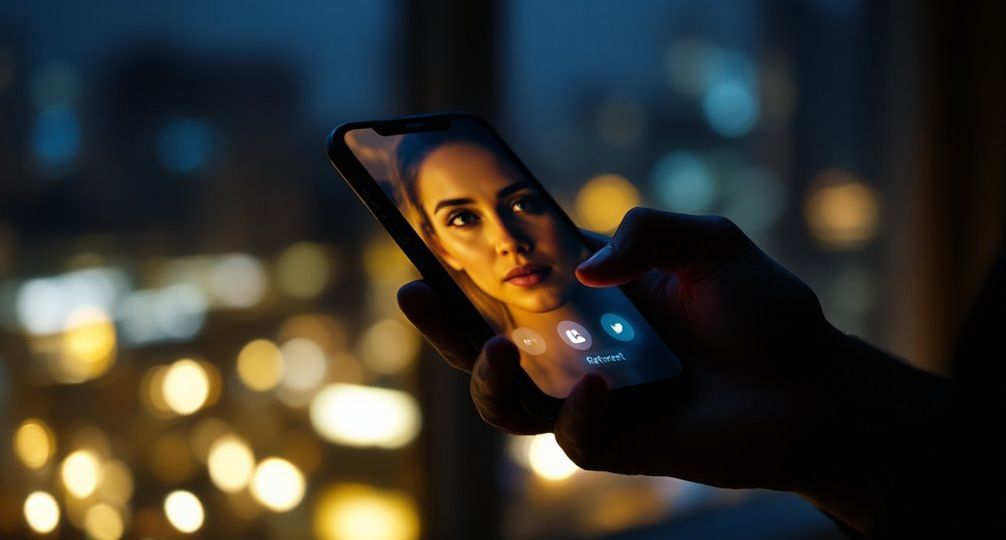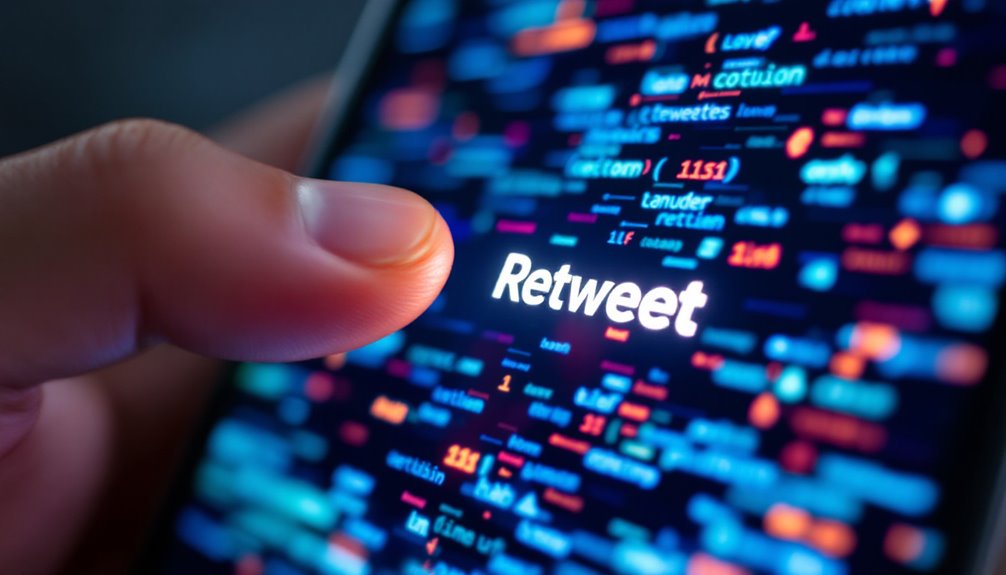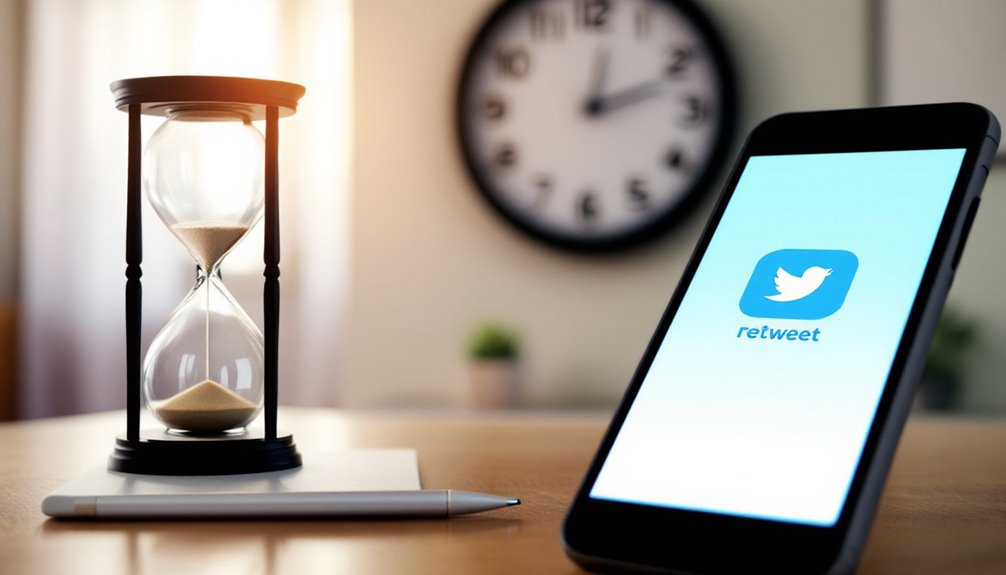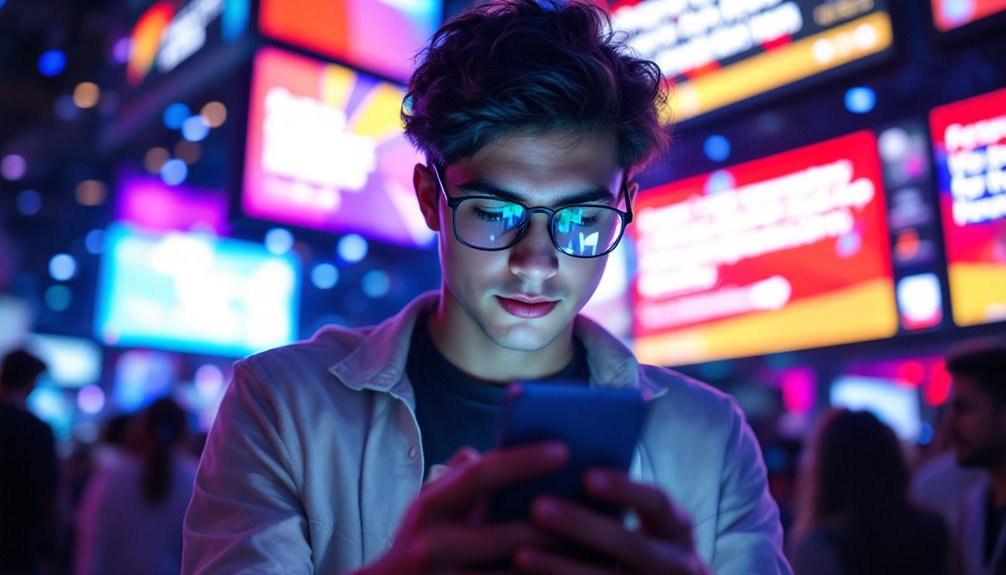
Are retweets permanent?
When you retweet, you’re sharing someone else’s message with your followers, but is that act as enduring as it seems? You might think a retweet is a lasting endorsement, yet it’s subject to the whims of the original poster and your own discretion. If the original tweet disappears, so does your retweet. So, what does this mean for the permanence of the digital footprints you leave behind? Can a retweet truly reflect your views indefinitely, or is it a fleeting moment in the vastness of social media? Consider the implications as you engage in this ever-evolving conversation.
Key Takeaways
- Retweets can be deleted by the original poster, affecting their visibility on Twitter.
- Users can un-retweet a post, removing it from their profile and timeline.
- Retweets may be subject to removal if the original tweet violates Twitter’s policies.
- The original tweet’s deletion will automatically remove all associated retweets.
- Legal issues or policy violations can lead to retweets being permanently removed.
Understanding Retweet Mechanics

Understanding the mechanics of retweets is essential for grasping how information flows on Twitter. Retweeting enables you to engage with content dynamically and participate in broader conversations. The platform’s design now prompts users to add comments via quote tweets, blending retweet etiquette with personal insight. This hybrid approach encourages the use of retweet humor, allowing you to inject wit and personality into the dialogue, enhancing engagement and reach. Tweets with images are retweeted 150% more than text-only tweets, showcasing the impact of visual content in amplifying a message’s reach. Shorter tweets gain more retweets, offering room for commentary. Including links within tweets considerably increases their retweet potential and can amplify your message across the network. Knowing that retweets can introduce new participants to a conversation, it’s strategic to craft tweets that invite discussion and interaction. Phrases like “please retweet” and “check out” are effective calls to action, fostering increased sharing. Retweets serve as an indicator of a tweet’s perceived value or relevance. Analyzing retweet patterns reveals how information diffuses rapidly, often reaching thousands due to Twitter’s structure.
Undoing a Retweet
Undoing a retweet is a straightforward process that offers flexibility in managing your Twitter presence. Whether you’re refining your retweet strategy or undoing mistakes, it’s vital to know the steps.
Locate the retweet, identified by a green icon, and simply click or tap it to undo. This action turns the icon gray, visually confirming the retweet’s removal from your timeline. The method remains consistent across platforms, whether you’re using a web browser or the official app on Android or iOS.
- Web and App Consistency: Steps are similar across different interfaces.
- Immediate Correction: No time constraints on undoing a retweet.
- Manual Process: Each retweet must be undone individually.
It’s important to understand that while undoing a retweet removes it from your timeline, the original tweet stays visible to others. This underscores the significance of thoughtful engagement in your retweet strategy. During emergencies, like Superstorm Sandy, Twitter serves as a key platform for information dissemination, highlighting the importance of accurate and timely communication.
If using third-party apps, be aware of potential API restrictions affecting this functionality. While undoing retweets, remember it doesn’t erase other interactions from your profile, maintaining your digital footprint‘s integrity.
Consider these factors to innovate your approach to content sharing, ensuring your online presence aligns with your evolving perspectives.
Retweets and Popularity

Understanding the timing of retweets is essential as sixty percent occur within the first hour, suggesting a rapid spread that algorithms could amplify.
With each retweet reaching an average of 1,000 users, the dynamics of retweet spread hinge on both network size and content value, impacting user popularity. Retweets function similarly to academic citations, reflecting the value and relevance of the content shared. Algorithms play a pivotal role, often favoring tweets with higher initial engagement, which reinforces visibility and potential influence.
Timing of Retweets
Timing plays an essential role in the retweeting process, as data shows that 60% of retweets happen within the first hour of a tweet being posted. This highlights the significant importance of retweet timing in crafting effective engagement strategies. Your tweet’s life is often brief, with most retweet activity ceasing after twelve hours. Understanding this timing can inform when to post for maximum impact.
- Early Engagement: A tweet’s prime time for retweets is immediately after posting, making early engagement vital. Given that retweeting contributes to the daily tweet limit, but there is no cap on retweet frequency, it’s crucial to engage quickly to capitalize on the early retweet window.
- Limited Window: The short lifespan of retweet activity underscores the need for timely and strategic content.
- Content Relevance: Relevant and useful content is more likely to be retweeted, extending your tweet’s reach.
To leverage retweet timing effectively, consider your audience’s activity patterns and aim to post when they’re most active. High follower counts can extend the retweet window, but relevant content is key for all users.
Incorporating these insights into your engagement strategies won’t only boost retweet numbers but also enhance the content’s visibility. Ultimately, retweet timing is a powerful tool in maximizing the reach and impact of your tweets.
Retweet Spread Dynamics
When it comes to retweet spread dynamics, the interplay between user behavior and network characteristics greatly influences how information proliferates across Twitter. Retweet trends demonstrate a fascinating pattern where most activity occurs within the first hour of a tweet’s release. This initial surge is critical in defining the breadth of a tweet’s reach.
Retweet networks reveal that the structure of these interactions, resembling retweet trees, can quickly circulate information to an average of 1,000 users, transcending the original tweet’s follower count. In the context of information dissemination, the challenge lies in managing rapid information spread, which can lead to privacy breaches and the exposure of false information.
Your understanding of retweet dynamics expands when considering user authority. Authoritative users, those who command respect and possess expertise, have a pronounced impact on information spread. Their retweets can act as catalysts, propelling content further and faster across retweet networks.
The dynamics are further nuanced by the concept of mutual enhancement and competition. Spreading a cooperative piece of information can bolster similar content, while competitive information might be sidelined.
Predictive models utilize these dynamics by focusing on the identities of both the tweeter and retweeter, rather than content, to forecast retweet likelihood. This highlights the importance of network interactions over tweet substance in shaping retweet trends.
Impact of Algorithms
Retweet dynamics are only part of the equation; Twitter’s algorithm greatly impacts the visibility and popularity of tweets. Engagement algorithms weigh retweets considerably, assigning them twice the value of likes. This positions retweets as essential in determining tweet prominence.
However, algorithmic bias can emerge, as the algorithm favors tweets from accounts with established credibility and robust followings. This can skew visibility towards authoritative voices, potentially sidelining emerging creators. The incorporation of rich media such as images and videos is known to significantly enhance engagement rates, further influencing tweet visibility and interaction.
The algorithm isn’t static; it adapts based on user interactions and behaviors. Your engagement history with an author—likes, retweets, replies—plays a vital role in what you see. This personalization enhances user experience but may inadvertently reinforce existing preferences, limiting exposure to diverse perspectives.
- Algorithmic Bias: Established accounts gain more traction, affecting tweet visibility.
- Engagement Algorithms: Prioritize retweets over likes, influencing tweet ranking.
- Adaptive Learning: Tailors content based on user behavior and past interactions.
Incorporating multimedia can further amplify tweet visibility. Photos, GIFs, and videos not only boost interaction but are also prioritized, ensuring a dynamic content mix.
As you navigate Twitter, consider how these algorithmic intricacies shape the content landscape, driving both engagement and innovation.
Twitter Rules on Retweets
Twitter’s rules on retweets are designed to maintain a balanced and genuine engagement environment. Understanding retweet etiquette and strategies is vital for leveraging Twitter effectively.
You can retweet by tapping the icon, allowing you to share another’s tweet directly or with added commentary via a quote tweet. It’s important to adhere to Twitter’s daily tweet limits, as retweets count toward this quota.
Strategically, consider retweeting news relevant to your audience, accolades for your brand, or tweets from industry peers to enhance credibility.
Timing and frequency also play key roles in maximizing retweet impact. Sixty percent of retweets happen within the first hour, indicating that timing aligns closely with audience activity.
Employing strategies like the 30/30/30 rule or retweeting 2-4 times a day can optimize engagement without overwhelming followers. To comply with Twitter’s guidelines, it is crucial to avoid duplicating tweets or using tools that enable simultaneous actions across multiple accounts, as these practices violate the Platform Manipulation and Spam policy.
Compliance with Twitter policies is non-negotiable. Avoid duplicating tweets or using tools to perform simultaneous actions across multiple accounts, as these violate Twitter’s Platform Manipulation and Spam policy.
Instead, focus on contributing meaningfully to conversations and refrain from asking for retweets, which could be perceived as spammy. This approach guarantees genuine interactions and sustainable growth.
Consequences of Retweet Misuse

Understanding Twitter’s rules on retweets sets the stage for examining the consequences of retweet misuse. As a digital innovator, you’re aware that retweet responsibility is vital in maneuvering the complex landscape of defamation risks. In the US, Section 230 of the Communications Decency Act often protects you from liability when retweeting, but adding defamatory content or exercising editorial control can change this. Other nations, like the UK and India, present a different challenge, where retweeting offensive content can lead to legal repercussions.
- Global Variances: Different countries have varied legal standards, impacting how retweets are perceived legally. For instance, in the UK, the Communications Act criminalizes the sending of grossly offensive messages, which can include retweets.
- Reputation Risks: Retweeting defamatory content can irreparably harm reputations, even if removed quickly.
- Court Precedents: Legal interpretations can differ, influencing how retweets are viewed as endorsements.
The defamation risks of retweet misuse aren’t just legal but reputational. Simple retweets can be seen as endorsements, leading to potential defamation claims.
Court rulings often interpret retweets as expressions of agreement, putting you at increased risk if you don’t assess the content critically. Understanding these nuances is essential to mitigate potential legal and reputational fallout.
Impact of Platform Changes
Steering through the ever-evolving landscape of Twitter requires a keen understanding of how platform changes influence user behavior. The introduction of quote tweets in 2020, albeit temporary, sought to transform platform engagement by encouraging users to share their perspectives. This change added friction to the retweet process, aiming for more thoughtful content amplification. Implemented globally, it offered valuable user feedback, prompting Twitter to evaluate its effectiveness in promoting engaged discourse post-election. Twitter has also implemented new restrictions on misleading tweets, using pop-up prompts to guide users towards credible information.
Algorithmic adjustments also play an essential role in how tweets gain visibility. By ranking tweets based on engagement potential and relevance, Twitter’s RealGraph score shapes the content you see. This scoring system, alongside prioritizing recency, guarantees a dynamic and diverse feed that keeps user interest piqued.
Moreover, misinformation mitigation strategies impact engagement by limiting interactions on labeled tweets. By requiring additional context and disabling certain actions, Twitter curbs the spread of misleading content while relying on authoritative sources for vital information.
The rebranding to X further altered user experience, phasing out ‘retweets’ in favor of ‘reposts.’ This shift reflects ongoing efforts to refresh the platform’s identity, as evidenced by changes in logos and terminology, marking a new era in digital communication.
Automation and Retweeting

Steering through the intricacies of automation and retweeting reveals a powerful strategy for enhancing your Twitter presence. By leveraging automated retweeting, you can streamline your content sharing process while maintaining industry relevance through keyword filters.
Manual retweeting tools offer precision in selecting tweets ideal for niche audiences or smaller followings. However, hybrid tools combine the best of both worlds, providing flexibility and efficiency with customization options that let you set criteria like follower count or engagement metrics. With over 330 million monthly active users on Twitter, the potential reach and impact of using these tools is significant.
- Engagement Metrics: Track performance to refine your retweeting strategy.
- Keyword Filters: Guarantee content aligns with your industry’s messaging.
- Content Scheduling: Automate timing to maximize audience engagement.
The benefits of using automation extend beyond just time savings. By guaranteeing consistency and relevance, you can increase your visibility strategies through targeted follower targeting.
Scheduled retweets allow you to optimize timing for when your audience is most active, boosting engagement rates. Furthermore, data insights from engagement metrics help you track and measure the success of your campaigns, offering a feedback loop for continuous improvement.
Ultimately, automated retweeting, when paired with strategic customization options, can greatly enhance your Twitter strategy.
User Behavior Insights
When you retweet, you contribute to a network exhibiting small-world characteristics with strong clustering, amplifying the influence of particular messages.
Data shows that influential users greatly shape information spread, where their retweets often trigger cascades that define their impact.
Motivations for Retweeting
Retweeting on Twitter isn’t just about sharing content; it’s a window into user behavior and motivations. When you retweet, you’re often driven by personal interest in the message, where 94% of users indicate this as their primary motivation. Trustworthiness factors also play an essential role, with more than three-quarters of users choosing to retweet content they find credible. Additionally, retweets can signal user agreement or highlight the entertaining nature of a post, adding layers to your online persona. By engaging in retweeting, users contribute to a supportive community atmosphere on Twitter, fostering relationships and collaboration.
- Emotional Resonance: While not always primary, this can subtly influence your decision to retweet.
- Community Engagement: It fosters connections, turning your Twitter presence into a hub of interaction and discussion.
- Curation Strategies: You carefully select content to share with followers, enhancing your account credibility.
Your retweeting behavior doesn’t just stop at content evaluation; it extends to account credibility and social interaction. You might find yourself drawn to retweet posts from credible accounts, ensuring your followers benefit from reliable information.
Personality traits like altruism, agreeableness, and conscientiousness can further shape your retweeting habits, as well as your activity level on the platform. By understanding these motivations, you can optimize your Twitter strategy for better engagement and influence.
Influence of Retweets
As you navigate the Twitter landscape, understanding the influence of retweets becomes vital for optimizing user engagement. Retweets notably amplify tweet visibility, introducing content to the retweeter’s followers and enhancing community engagement. Knowing why users retweet—be it due to retweet motivations like interest, emotional resonance, or trust—lets you tailor your content to foster a more interactive community.
By strategically timing your retweets, you can maximize engagement and maintain a dynamic communication flow.
Retweets don’t just boost visibility; they also help in cultivating credibility and nurturing relationships within your community. When you retweet content from others in your field, it signals credibility and fosters favorable relationships. This reciprocal recognition strengthens bonds with collaborators and encourages positive communication from your followers.
Trust in the account or message being retweeted plays a vital role in these decisions, influencing user behavior and community dynamics.
Analyzing retweet patterns, such as timing and frequency, reveals insights into user behavior. Patterns like “MACHINE-GUN” or “ENTHUSIASM” can highlight influential users or detect anomalies.
Retweet Limits and Restrictions

Understanding the dynamics of retweet limits and restrictions is essential for maximizing your Twitter engagement without overstepping boundaries. With a daily cap of 2,400 tweets, including retweets, Twitter encourages a strategic approach to retweeting. In March 2023, Twitter Blue subscribers gained the ability to tweet up to 4,000 characters, reflecting the platform’s commitment to expanding user expression.
To maintain effective retweet etiquette, analyze your retweet frequency and align it with your audience’s engagement patterns. This enhances retweet visibility and performance, ensuring your retweet strategy remains innovative and impactful.
Consider the following data-driven insights to optimize your retweet activities:
- Retweet Diversity: Mix content from different profiles to keep your retweet audience engaged and interested.
- Retweet Motivation: Focus on retweeting content that resonates with current retweet trends and audience interests.
- Retweet Effectiveness: Monitor and adjust your retweet frequency to align with the most active times for your audience.
Retweeting too quickly can lead to temporary blocks, so pacing is vital. The half-hour restrictions prevent flooding, reinforcing the need for a balanced retweet strategy.
Retweet analysis shows that timing and content relevance drive retweet engagement, while user influence is gauged more by retweet activity than follower count. By understanding these dynamics, you can navigate Twitter’s limits effectively, enhancing your retweet performance and visibility.
Effects of Misleading Retweets
When you retweet misleading information, it not only amplifies false narratives but can also lead to reduced visibility of your tweets due to platform algorithms that flag misinformation. This can impact your account status, as frequent sharing of disputed content might result in penalties like temporary suspensions or reduced engagement. Understanding these repercussions is essential because the spread of false news, proven to be 70% more likely than true information, directly affects public discourse and perception. Furthermore, falsehoods reach 1,500 people six times faster than accurate news, illustrating the rapid and widespread impact of misinformation on social media platforms.
Reduced Tweet Visibility
Retweets, those digital echoes on Twitter, can greatly affect tweet visibility, especially when they spread misleading information. When contextual notes are added to retweets, they drastically reduce visibility by almost half. These notes provide essential context, making users rethink before sharing misleading content. However, timing is vital. If a note appears too late, its impact dwindles, as false news travels 20 times faster than true stories. This rapid spread makes it challenging to curb misinformation effectively.
- Contextual notes cut retweets by 50%, showing their power in reducing misinformation spread.
- Despite not directly altering algorithmic visibility, user reactions to notes markedly influence tweet reach.
- A delay of 15.5 hours between the tweet and note hinders the effectiveness of contextual interventions.
User behavior plays a pivotal role, as individuals often retweet to appear knowledgeable, spreading false information more broadly. This engagement highlights the importance of timely contextual notes. Crowdsourced moderation complements professional efforts to combat misinformation, helping balance free speech with the need to prevent harmful content dissemination.
While algorithms don’t automatically reduce visibility with notes, user reactions do. The innovative potential of contextual notes lies in their ability to reshape retweet dynamics, fostering a more informed Twitter community.
Balancing speed and accuracy is key to minimizing misinformation’s reach on social media.
Impact on Account Status
Engaging in retweeting misleading information can directly impact your account status on Twitter, leading to potential restrictions. When you retweet content that Twitter flags as “disputed,” you’re not just risking temporary limitations, but also eroding your account trust and credibility. Research suggests that retweeting indicates interest, trust, and agreement, reinforcing how sharing misleading information might lead to negative consequences. Repeatedly sharing false information might result in Twitter taking action, such as disabling your ability to retweet or like certain tweets. This not only diminishes your engagement but also tarnishes your reputation as a credible source. Data shows that accounts seen as untrustworthy due to frequent misleading retweets often experience a decline in followers and interactions. The integrity of your account’s information is vital, as users seek authenticity and reliability. If your account is perceived as uncredible, users are likely to block, mute, or even report you, further affecting your reach and influence. Twitter’s enforcement policies emphasize transparency and accountability, especially during significant events like elections. By encouraging commentary on disputed retweets, the platform nudges you towards more thoughtful engagement. This approach helps maintain the balance between freedom of expression and the need to curb misinformation, reinforcing the importance of retweet credibility in the digital ecosystem.
Retweeting During Key Events

During key events, the power of retweets becomes particularly pronounced, greatly amplifying the reach of tweets. Event driven retweeting acts as a catalyst, propelling content far beyond the confines of your follower list. A single retweet can initiate a chain reaction, reaching thousands, if not millions. This is especially true during trending topics or major news events, where audience engagement peaks. The dynamic nature of these events means your content can go viral almost instantly.
- Amplified Reach: A retweet during a key event can expose your content to new, diverse audiences.
- Increased Engagement: Events like Twitter chats generate high interaction, providing valuable social proof.
- Optimal Timing: Posting during peak hours or the event’s onset maximizes retweet potential. Retweets are a powerful tool that allows your posts to be seen by followers of those who share them, extending the reach of your content significantly.
Timing and context are essential. Retweets during peak hours or as an event begins increase visibility, suggesting the importance of strategic planning.
Also, incorporating relevant hashtags guarantees your content is discoverable. Furthermore, retweeting content from influencers during such events not only boosts visibility but also strengthens your brand’s credibility.
Analyzing retweet performance allows for refining future strategies, guaranteeing your content consistently resonates during key moments.
















